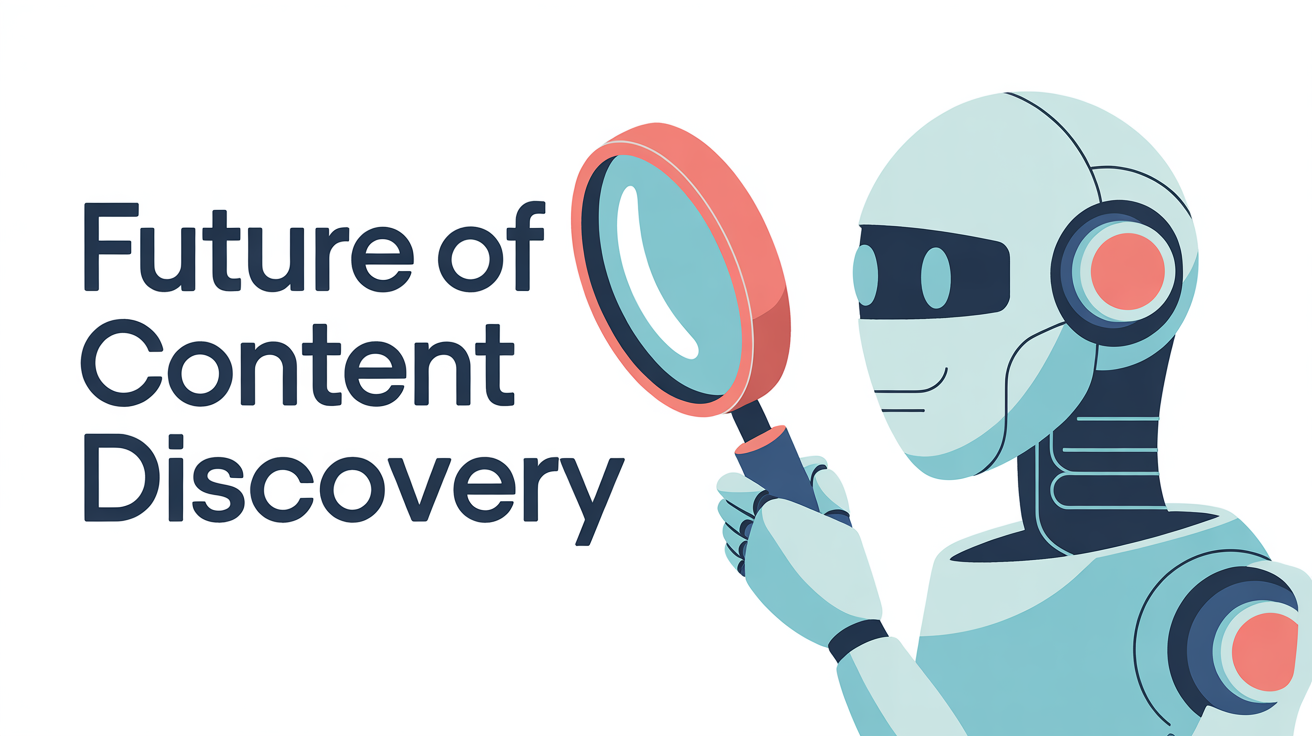Why AI Optimization is the Future of Online Content Discovery
AI Search • Oct 13, 2025 3:25:47 PM • Written by: Kelly Kranz

AI Optimization (AIO) is the future of online content discovery because AI search engines are replacing traditional links with single, synthesized answers, meaning your content must be structured to be cited by the AI, not just ranked.
The internet is drowning in content. With billions of web pages, videos, and social posts, simply having great content is no longer enough. The future of online visibility isn't just about SEO—it's about mastering AI Optimization (AIO), a fundamental shift that's redefining how users find information.
The rise of conversational and generative AI search is not a coming trend; it's the current reality that demands a new strategy for content discovery.
The Shift from Traditional Search to AI Search
For decades, content discovery was governed by traditional search engines and keywords. You typed a few terms, and the search engine returned a ranked list of links. The goal of SEO was to get your link to the top of that list.
Today, this model is being rapidly superseded by AI Search.
-
Conversational Interfaces: Users are no longer typing short, fragmented keywords. They are asking full, natural-language questions, as if speaking to an expert, through tools like Google's Search Generative Experience (SGE), ChatGPT, and other AI assistants.
-
Direct Answers, Not Just Links: AI systems don't just provide a list of links; they synthesize information from multiple sources to provide a single, comprehensive answer—an "AI Overview" or direct response. Your content's goal is no longer to rank, but to be the source that gets cited in that final, authoritative answer.
This shift from a ranked list of links to a single, synthesized answer requires content creators to adjust their focus.
What is AI Optimization?
AI Optimization is the practice of structuring your content, technical foundation, and brand presence so that it can be easily ingested, understood, and cited by Large Language Models (LLMs) and generative AI search systems.
It moves beyond keyword density to focus on three critical pillars:
1. Structure: Making Content "Snippable" and Parse-Ready
AI models don't "read" a page like a human; they parse it—breaking it down into small, usable chunks. If your content is one long, unbroken wall of text, the AI will struggle to find and extract a clear, quotable piece.
-
Clear Headings and Structure: Use headings (H1, H2, H3) not just for style, but as clear signals to the AI of where a new topic starts and ends. Think of them as chapter titles for the AI.
-
Semantic Chunking: Structure your content to provide a direct, concise answer immediately after a heading, followed by the supporting details. This makes the information easy for the AI to "snip" into an answer.
-
Structured Data (Schema): Implementing structured markup (like FAQ, How-To, or Product schema) provides a roadmap for the AI, explicitly telling it what your content is about and what specific questions it answers.
2. Clarity and Authority: Answering with Precision
In the age of AI, topical authority and expert-level clarity matter more than ever. AI is designed to prioritize the most trustworthy and contextually relevant information.
-
Write for Intent: Focus on directly answering the full, conversational questions your audience asks. Go beyond simple keywords to understand the context and motivation behind a user's search.
-
E-E-A-T Optimization: The search acronym for Experience, Expertise, Authoritativeness, and Trustworthiness is paramount. Use clear author bios with credentials, cite original research, and ensure your content reflects real-world experience to build credibility that AI can recognize.
-
Avoid Vagueness: Use precise, factual language. AI systems prefer content anchored in measurable facts and data over flowery, subjective claims.
3. Entity Optimization: Building Brand Co-Occurrence
AI models are excellent at understanding entities—people, places, organizations, and concepts. Entity optimization ensures your brand, product, or service is correctly associated with relevant topics across the web.
-
Consistent Entity Mentions: Ensure your brand and key product names are consistently mentioned alongside relevant topics on authoritative third-party sites. This co-occurrence signals to the AI that your brand is a reliable and recognized entity within that niche.
-
Multi-Platform Presence: AI models pull data from more than just Google. Optimizing your presence on YouTube, social media, specialized forums, and industry databases increases the overall authority signal for your brand entity.
The Future is Personalized and Agentic
AIO isn't a temporary tactic; it's the foundation for the next generation of content discovery. We're moving towards:
- Hyper-Personalization: AI is leading to search results and content recommendations that are tailored not just to what you search for, but who you are, factoring in your past behavior, location, and demonstrated preferences.
- Agentic AI: Future AI agents will be able to navigate the web, execute complex tasks (like booking an appointment or comparing products), and even interact with your website on behalf of a user. The websites that are clearly structured and technically clean will be the ones that these agents can use effectively.
AI optimization isn't about gaming an algorithm—it's about creating content that is undeniably helpful, structurally sound, and technically clean, making it easily digestible by both humans and machines. Those who adapt now will define the future of online content discovery.
Strategic AI Consultation for Practical Business Results
Kelly Kranz
With over 15 years of marketing experience, Kelly is an AI Marketing Strategist and Fractional CMO focused on results. She is renowned for building data-driven marketing systems that simplify workloads and drive growth. Her award-winning expertise in marketing automation once generated $2.1 million in additional revenue for a client in under a year. Kelly writes to help businesses work smarter and build for a sustainable future.

